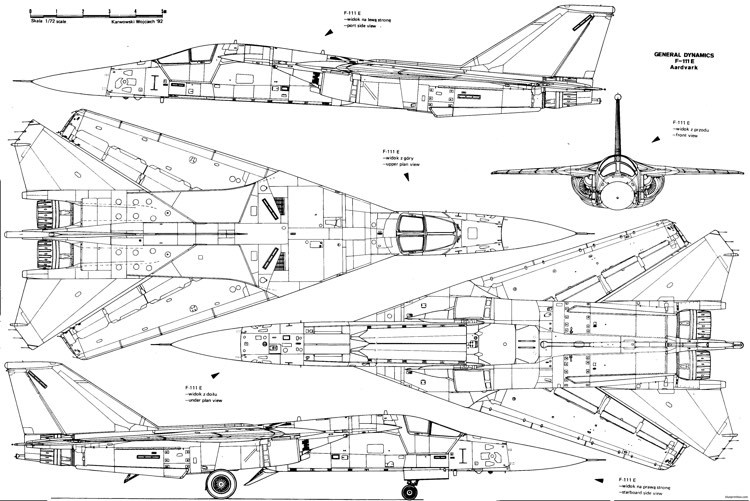The F-111 Aardvark pioneered several, now common-place technologies such as the afterburner, variable-sweep wings and automated, low-level, terrain-following radar.
The F-111 came about to meet the United States Air Force (USAF) requirement for a new, tactical fighter-bomber capable of long-range, all-weather strikes at low level to destroy targets deep in enemy territory. Compared to earlier models, the F-111E had modified air intakes to improve engine performance and a new forward-looking attack radar. In total, 566 F-111s of all series were built; 94 of them were production F-111Es.The F-111 was used primarily during the Vietnam War and Operation Desert Storm. These aircraft were credited with destroying roughly 1,500 tanks and armored vehicles. When the F-111 was retired from service in July 1996, the previously unofficial name, “Aardvark,” was officially adopted for the plane as part of the ceremony.

Serial Number: 68-0020
Manufacturer: General Dynamics
Crew: Two
Engines: Two Pratt & Whitney TF30-P3 turbofans; 18,500 pounds thrust each in afterburner
Wingspan: 63 feet (extended); 31 feet 11 1/2 inches (swept)
Length: 73 feet 5 1/2 inches
Height: 17 feet 6 inches
Weight: 46,172 pounds (empty); 98,850 pounds (maximum)
Speed: 470 mph (cruising); 1,453 mph, Mach 2.5 (maximum)
Range: 3,165 miles with external fuel tanks (maximum)
Service Ceiling: 61,000 feet
Armament: One 20mm M61A1 Vulcan rotary cannon with 2,000 rounds of ammunition; up to 30,000 pounds of conventional or nuclear ordnance (internal and external)
Cost: $8,200,000
In August 1965, the Ogden Air Material Area was assigned the specialized repair of certain equipment on the F-111A aircraft, including the rocket motor and capsule pyrotechnics for the crew escape module and many wheel and brake system components. One year later, Hill Air Force Base was designated as the responsible engineering agency for all F/RF/FB-111A landing gear components. In early 1973, the base was assigned the repair of the missile ejector racks used on the FB-111 aircraft. Hill Air Force Base also either maintained, supported or oversaw several F-111 aircrew training systems and simulators over the years. The F-111E on display was manufactured in 1969. It served on several bases within the United States and at the Royal Air Force Base in Upper Heyford, England, in 1971. In 1994, this aircraft moved to Hill Aerospace Museum for display.
The F-111 Aardvark pioneered several, now common-place technologies such as the afterburner, variable-sweep wings and automated, low-level, terrain-following radar.
Though it stumbled in its early life, the Aardvark ultimately proved itself a capable strike aircraft.
The Aardvark name originated from the Afrikaans language, meaning “earth-pig,” which the Royal Australian Air Force (RAAF) shortened to “pig.”
Though it proved to be a highly successful and fearsome aircraft, the RAAF eventually retired the F-111 due to age and upkeep costs.
The Aardvark was capable of carrying a single 20mm M61a1 Vulcan Gatling cannon used for close-in, air-to-air engagements, though it was rarely fitted to the aircraft.
The majority of F-111s were replaced by the F-15 Strike Eagle.
In early 1968, six F-111s of the 474th Tactical Fighter Wing were deployed to Southeast Asia to test the aircrafts’ capabilities in real combat. Unfortunately, two were lost and their airframes were never recovered.
The Aardvark had nine hard points in total, allowing it to carry up to 31,500 lbs.
Primarily designed for ground attack, strategic bombing, reconnaissance and electronic warfare, the Aardvark had the capability of dogfighting.
Utilizing its variable wings and afterburner, the Aardvark could accelerate to approximately Mach 2.5, or 1900mph.